Saturday, February 26, 2022 -
Much of the day traveling north toward Amman. We stopped in Madaba to see the mosaic in the Byzantine church
of St George. This
was the only bad weather day we had on the trip - it was raining. We had brought rain jackets, but they were
packed away when it was beautiful in Aqaba.
So we put on cheap plastic raincoats provided on the bus and off we went into the storm to hike several
blocks to the church.
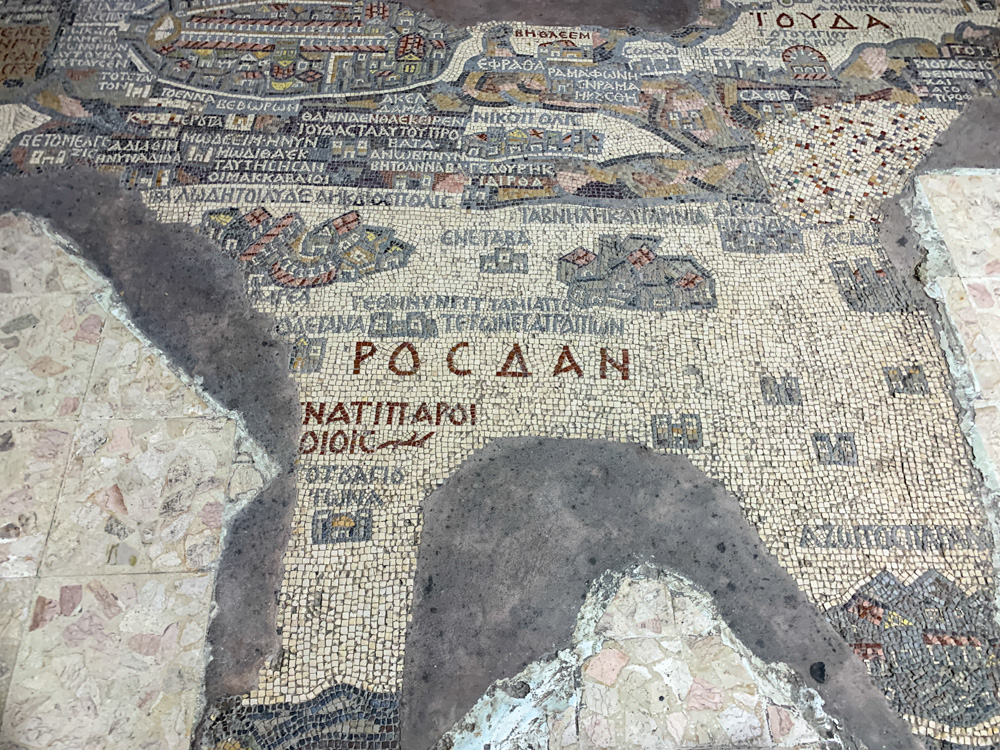
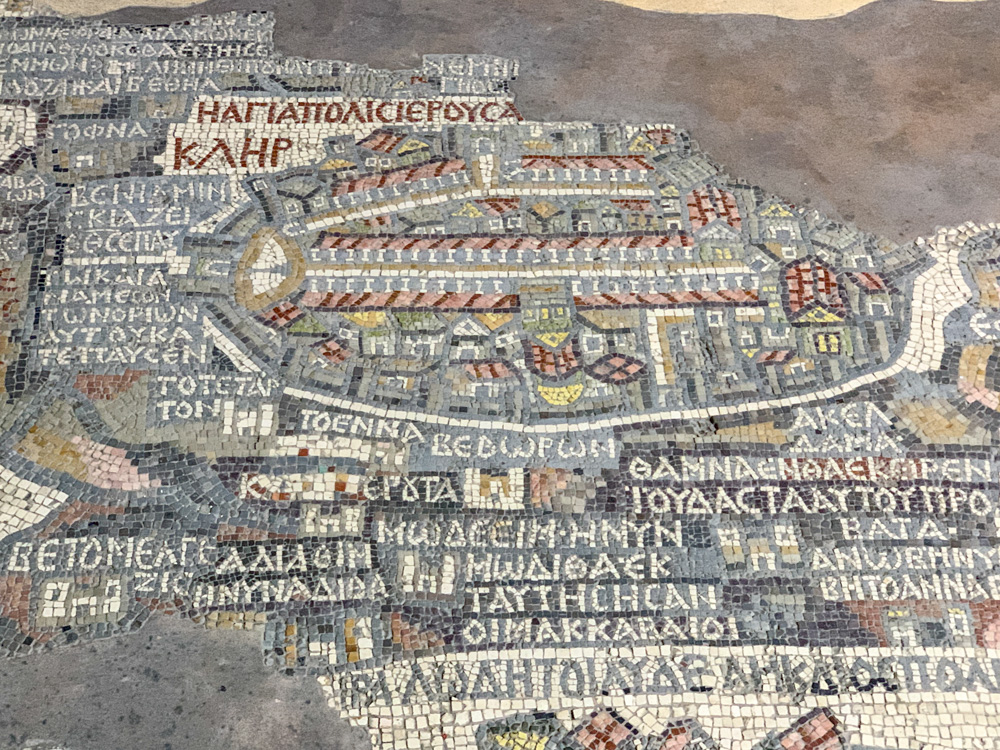
The mosaic contains the earliest extant representation of Byzantine Jerusalem, labeled the "Holy City." The map provides important details about its 6th century landmarks, with the central colonnaded street, and the church of the Holy Sepulcher clearly visible. This map is one key in developing scholarly knowledge about the physical layout of Jerusalem after its destruction and rebuilding in 70 AD.
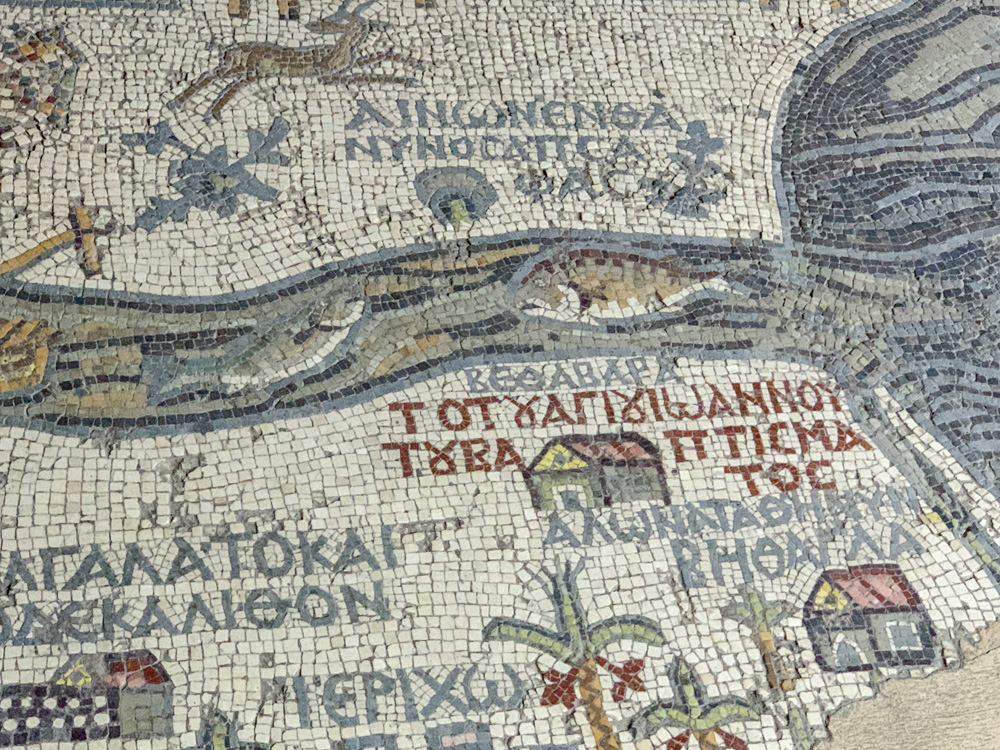
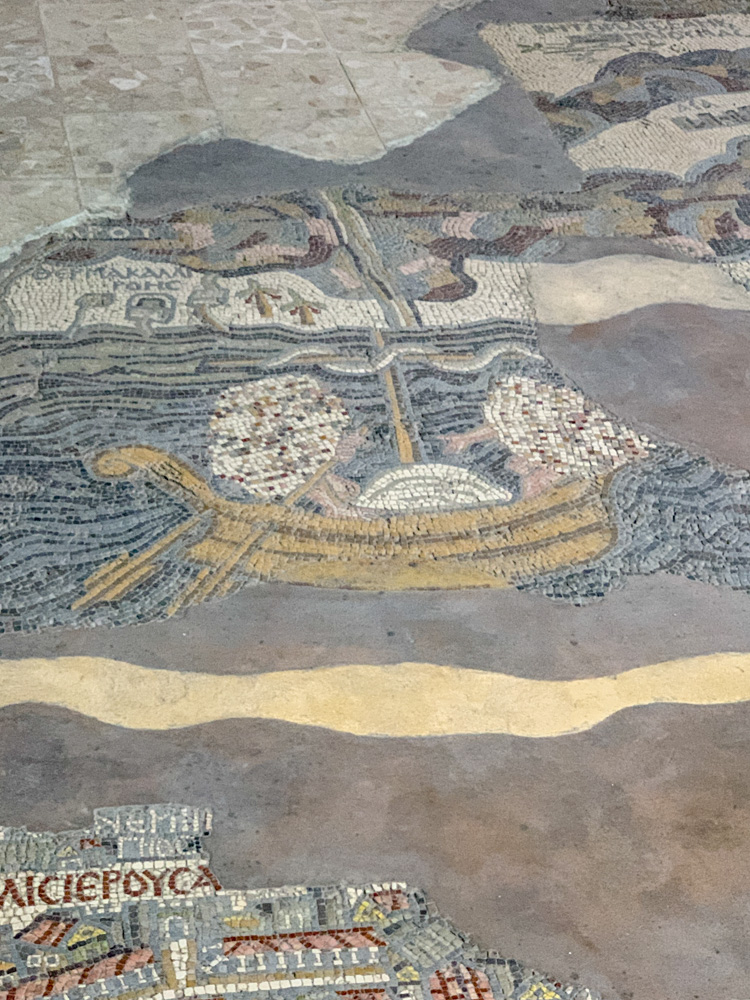
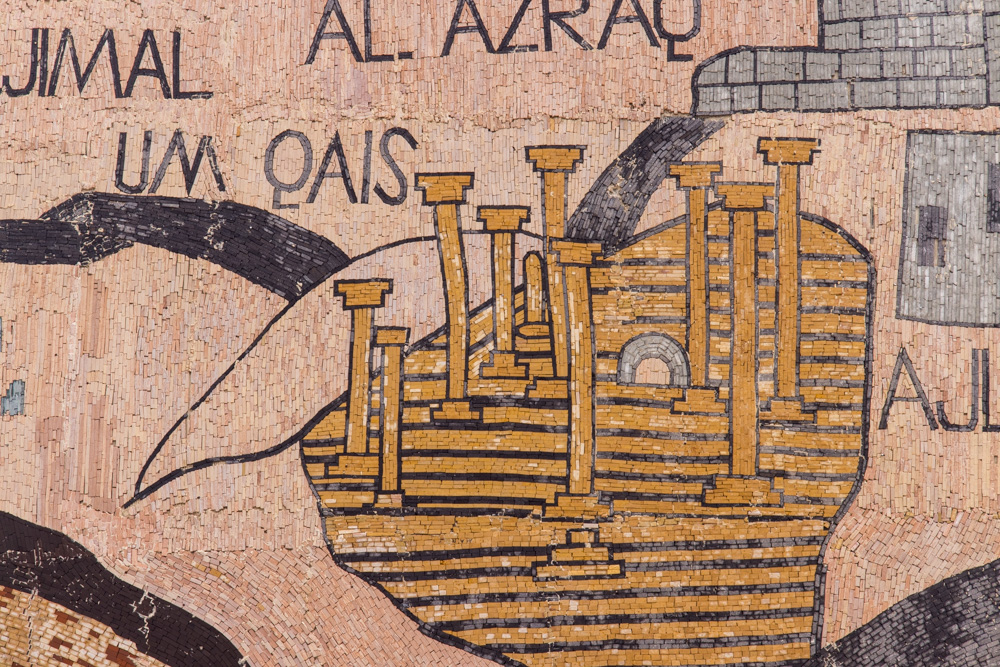
The city has an unusual number of mosaics from the Byzantine period. It is surmised this is due to the building of the city around several Roman Temples and then churches.

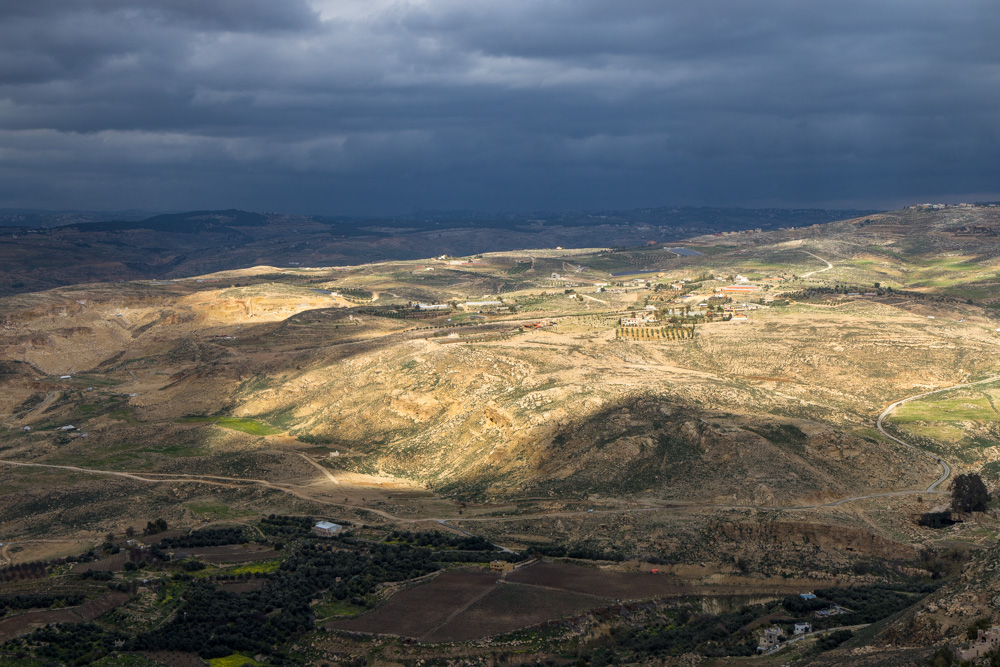
Then a drive to Mt Nebo, an elevated ridge located in Jordan 2,330 feet above sea level. A view toward Amman from the top of Mt Nebo.
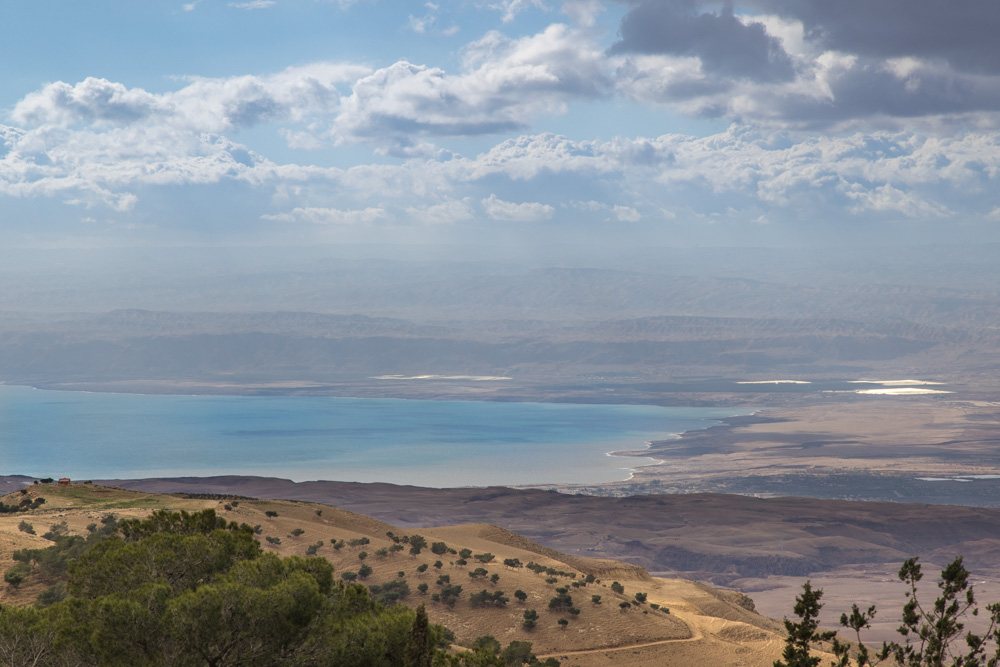
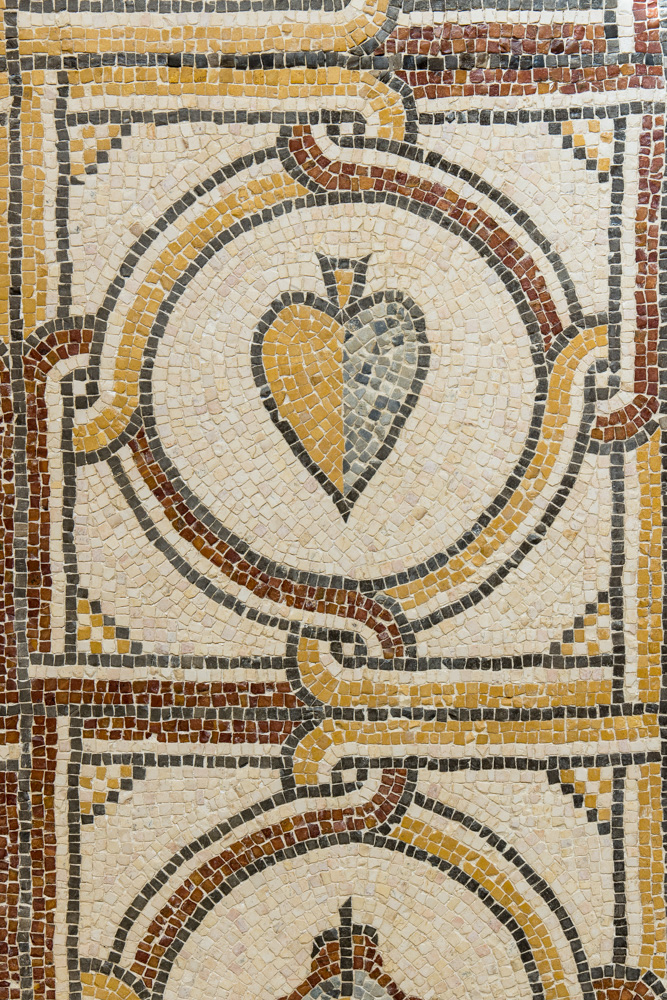
Mosaics were discovered under the floor of the "newer" church.
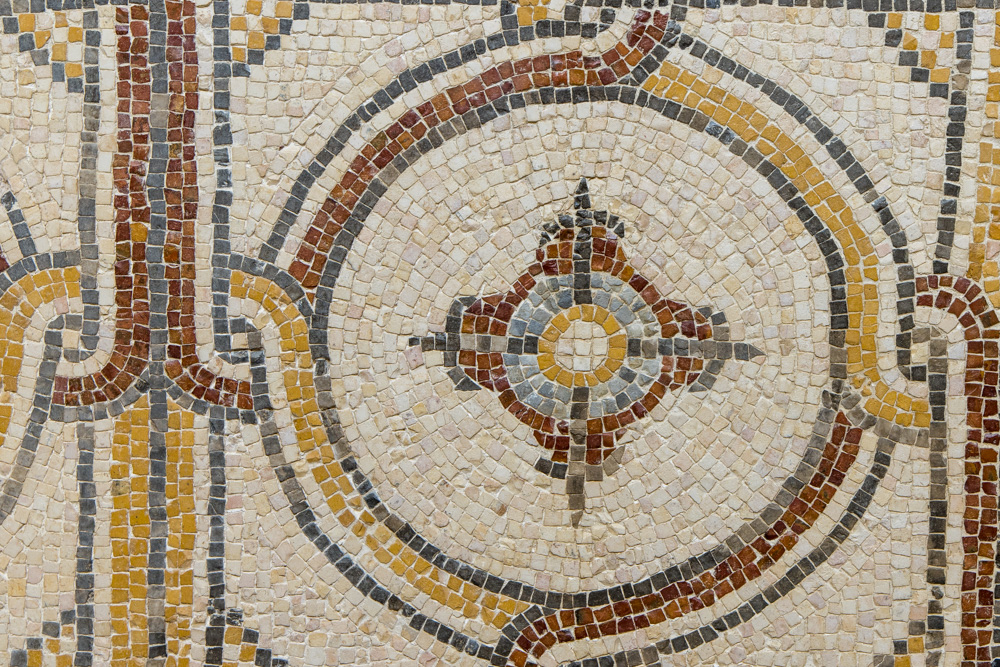
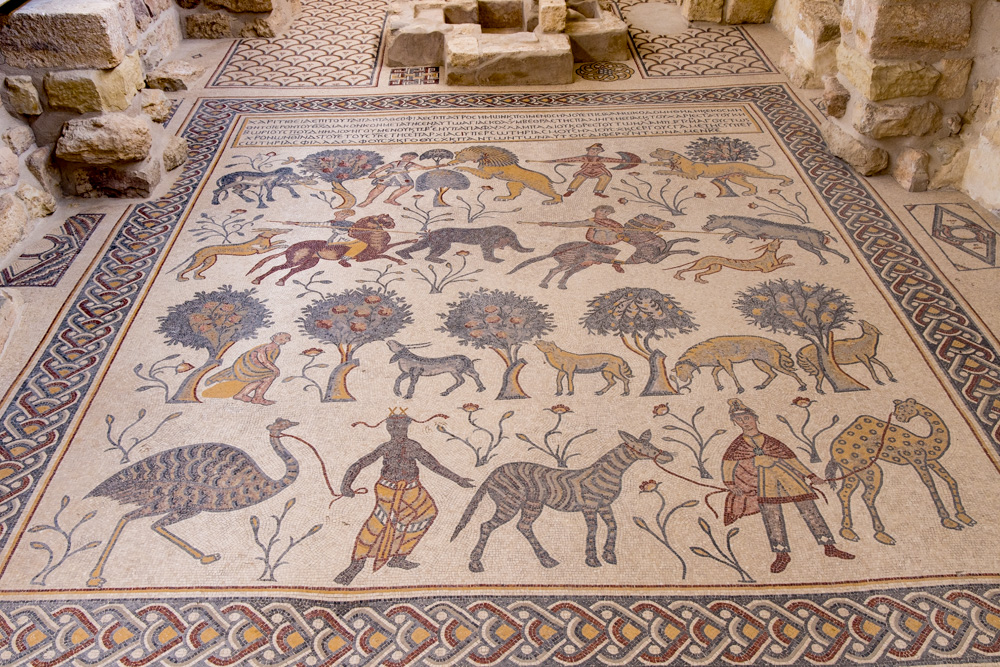
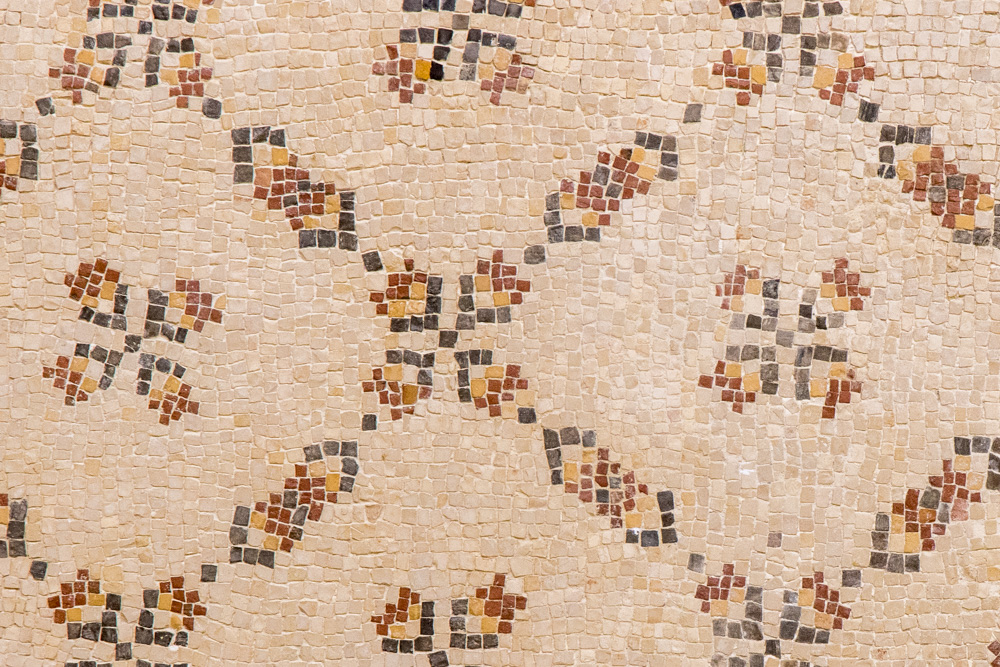
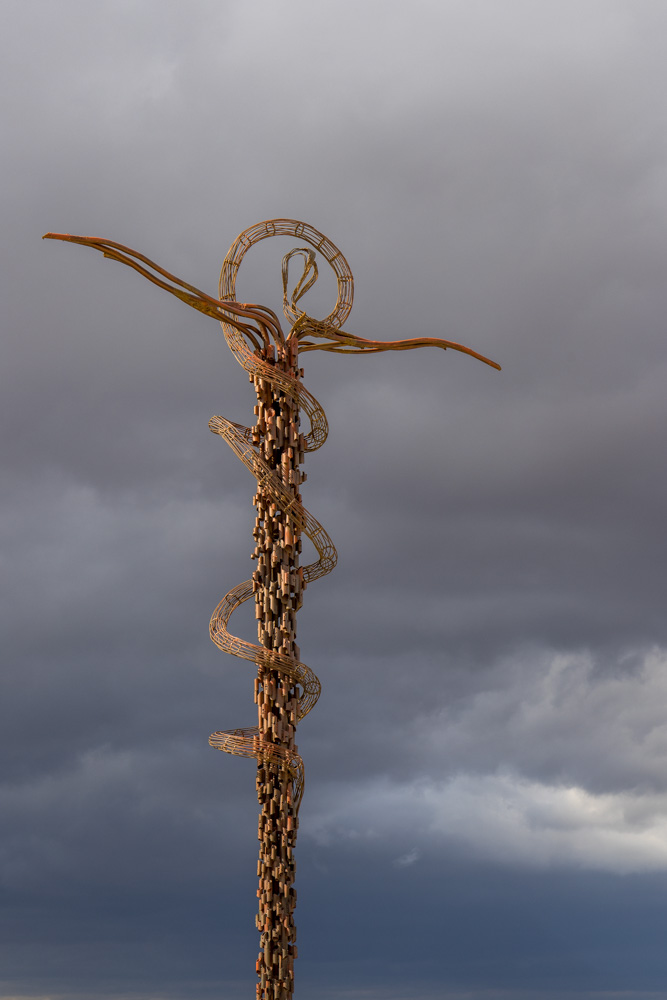
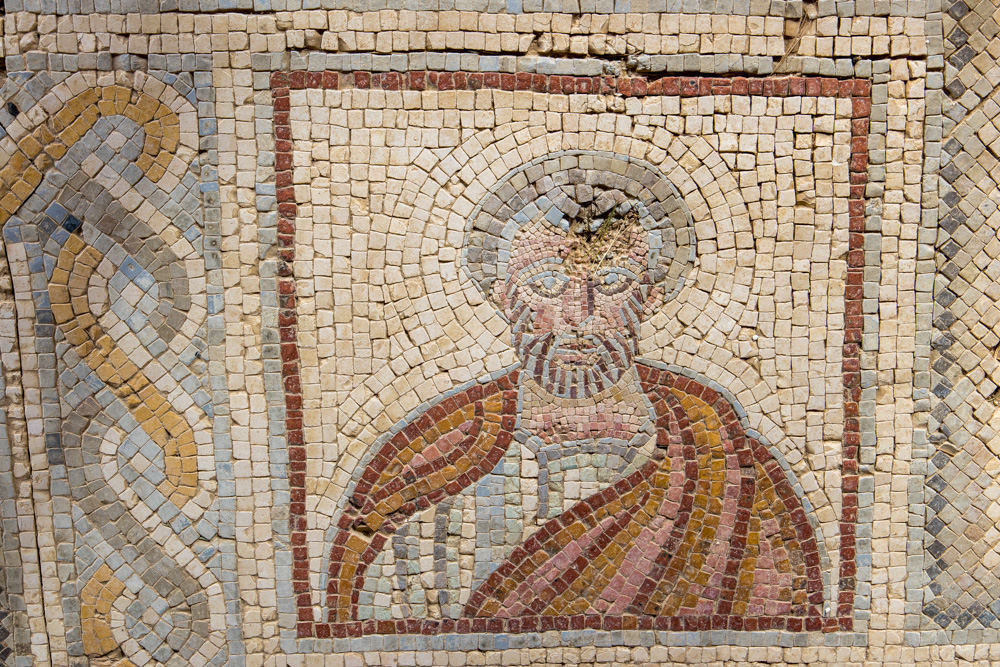
We returned to our hotel in Amman and prepared to travel to Cairo for the next day.